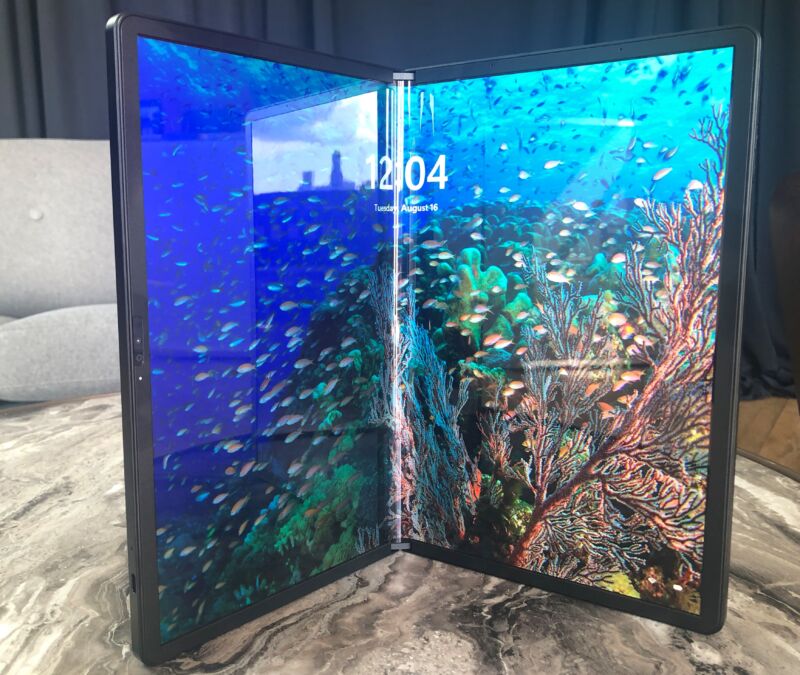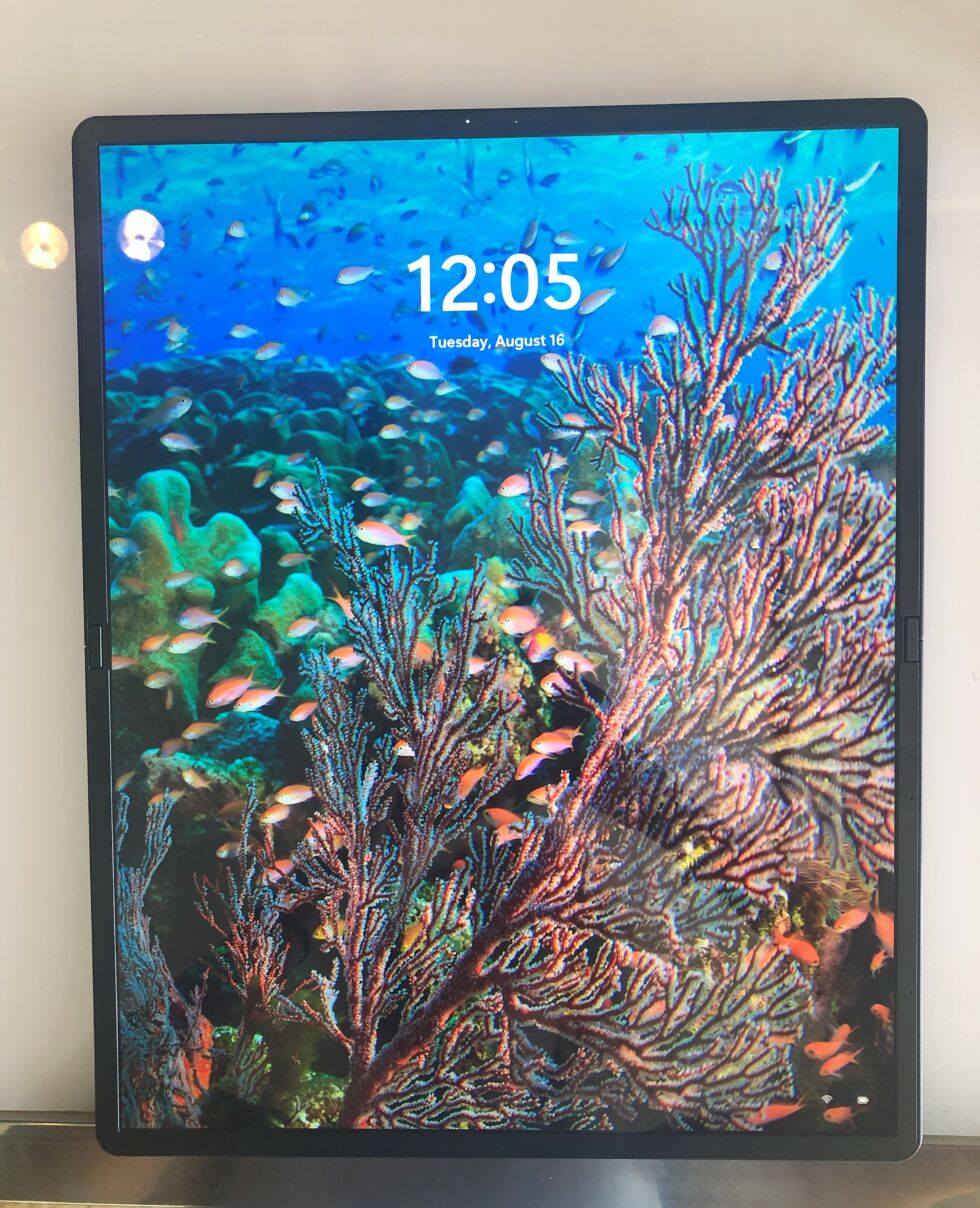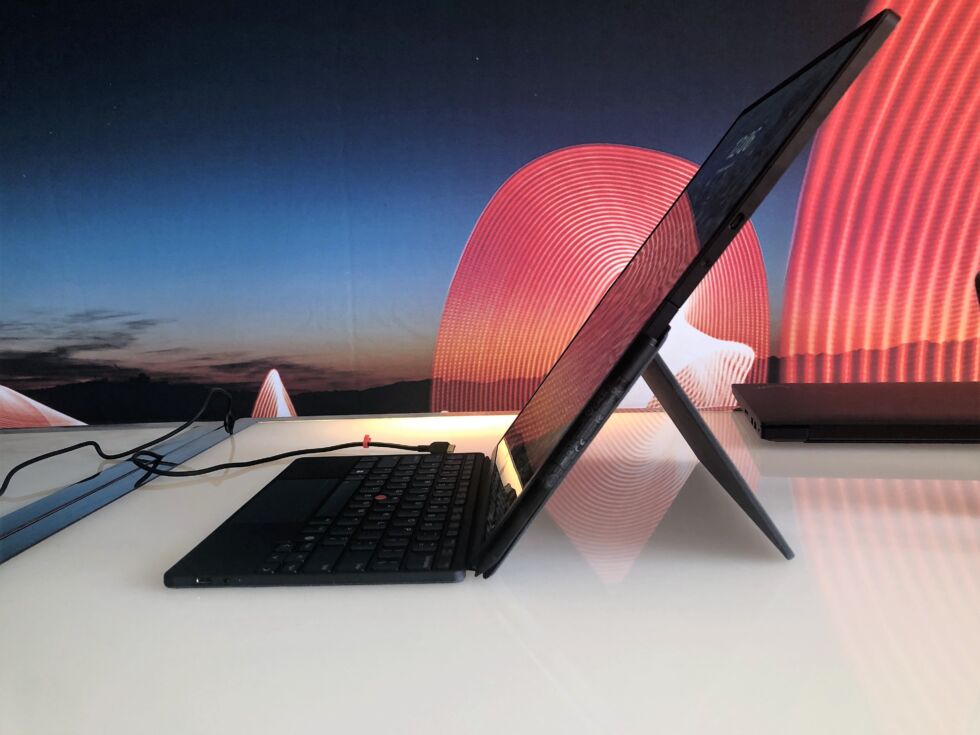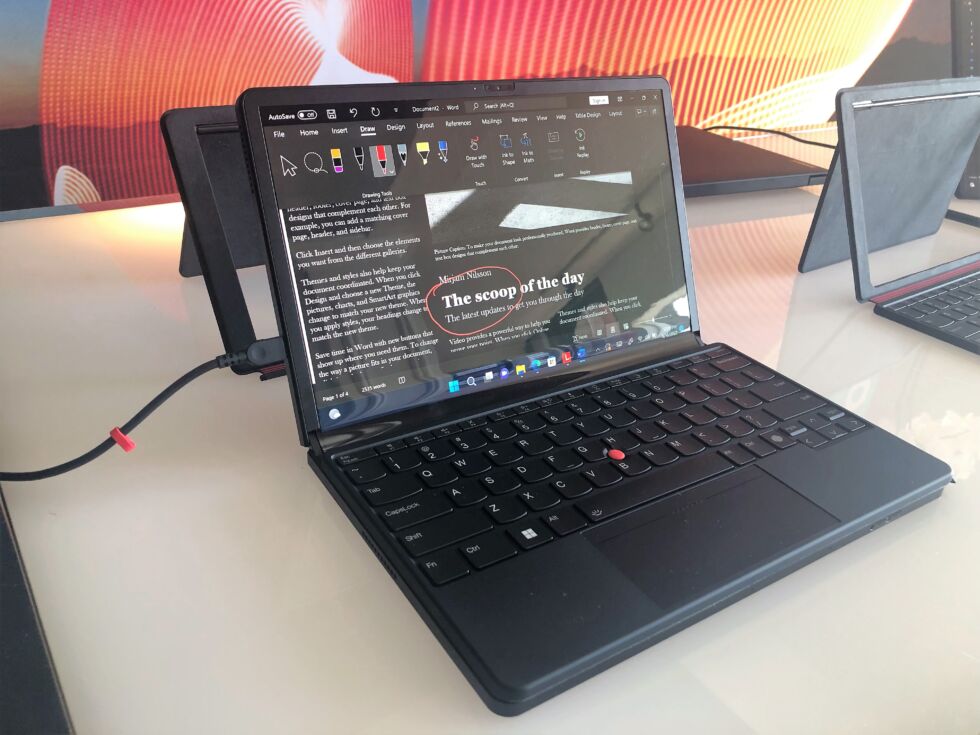
Lenovo is giving the foldable PC a second shot. The upcoming Lenovo 16-inch ThinkPad X1 Fold announced today attempts to improve on 2020’s ThinkPad X1 Fold with a bigger screen, more powerful specs, and an operating system better suited for multitasking across the bendable OLED touchscreen.
I tried out the Windows 11 PC ahead of its expected November launch, and it improved upon the weaknesses of the original 13.3-inch ThinkPad X1 Fold.
The new Fold folds up more securely than before, its OS is more accommodating to dual screens, and enhanced specs give it greater potential for business use. Lenovo may finally have the pieces needed for a desirable, natural-feeling foldable Windows experience.
Bigger foldable screen
Lenovo’s next foldable PC has a screen measuring 16.3 inches diagonally when fully open with 2024×2560 pixels. The original ThinkPad X1 Fold used a 13.3-inch, 2048×1536 OLED screen.

Compared to the 13.3-inch screen, the 16.3-inch display immediately gave me more flexibility when displaying multiple windows. The extra screen space was also nice for watching videos, though the 4:3 aspect ratio meant decently thick black bars with most modern video content.
Using magnets, the foldable’s optional, but sometimes necessary, stand seemed like it had a secure connection to the PC, whether the system was fully open in landscape or portrait mode.

When I set the 16.3-inch device vertically, it provided a uniquely long-view fit for ongoing news or social media feed. It fit an impressive amount of on-screen text when I viewed a newspaper-like document on it.

Despite having a 22 percent larger screen than its predecessor, Lenovo’s 16-inch ThinkPad X1 Fold didn’t feel much more cumbersome to carry. In fact, it felt much less clunky than carrying around the typical clamshell laptop in this size class.
The new PC has a 25 percent thinner chassis than the 13.3-inch ThinkPad X1 Fold. It’s 0.34 inches (8.6 mm) thick when open and 0.69 inches (17.4 mm) thick when folded, compared to 0.5 inches (11.5 mm) and 1.1 inches (27.8 mm), respectively, with the first Fold.
The 16.3-inch screen also allows for a 12-inch clamshell experience, where the foldable is bent in half, and the lower half is covered with Lenovo’s magnetically attached ThinkPad keyboard.

Usage of a larger foldable screen required a redesign of the hinge and the panel, which is now attached to the spine, allowing it to flatten underneath the chassis when unfolded.
-
The PC’s hinge.Scharon Harding
-
The PC’s spine.Scharon Harding
Lenovo’s announcement described a bell-shaped hinge system that “allows the foldable OLED panel to be folded flat in both open and closed scenarios resulting in a thinner system.” More than 200 parts reportedly move simultaneously when folding and unfolding the PC.
In action, the hinge felt sturdy and required a healthy amount of force to shift the PC’s positioning. It didn’t seem like it would budge unless I wanted it to. How well that hinge can withstand heavy use will, of course, be a large factor in how successful this foldable is. Lenovo said it uses MIL-STD-810H testing standards for the PC.
“A new display interface was developed, which folds the non-active area, enhancing durability and enabling thinner bezels,” Lenovo’s said in its announcement. The display’s bezels are “no more than” 0.39 inches (10 mm), according to the vendor.
“The hybrid shutter frame was also redesigned with the multiple benefits of thinness, more room for antennas, and simplifying field servicing.”
https://arstechnica.com/?p=1876903

